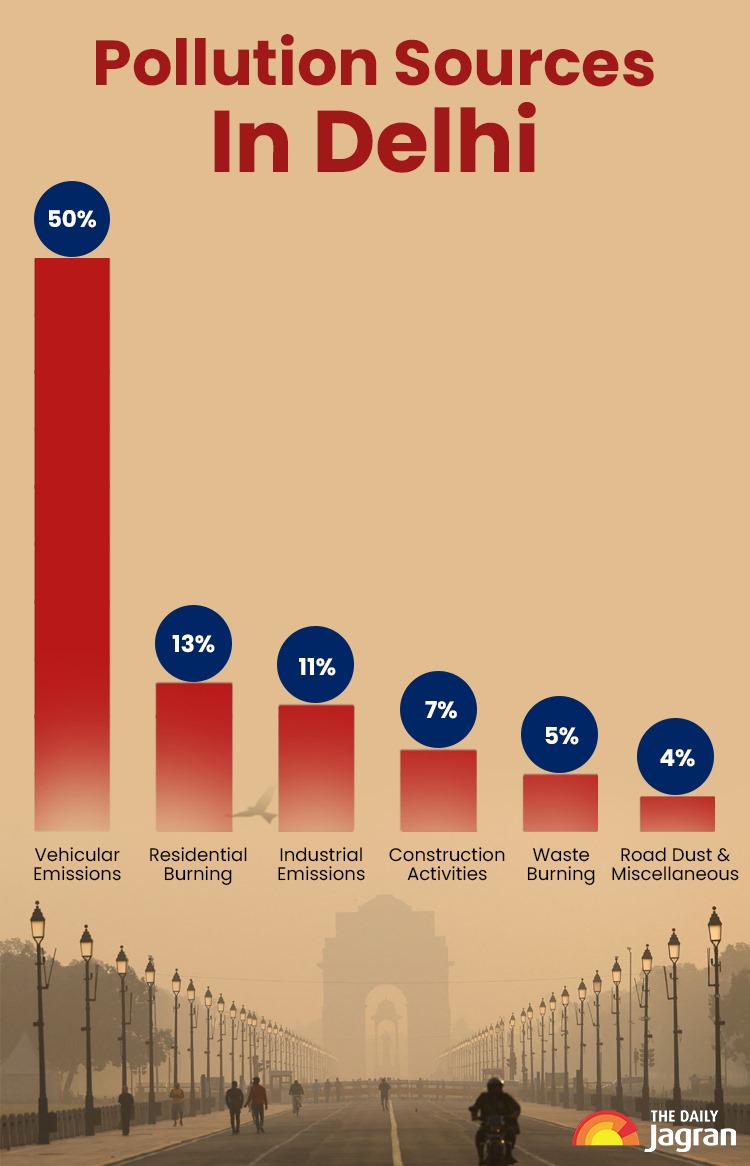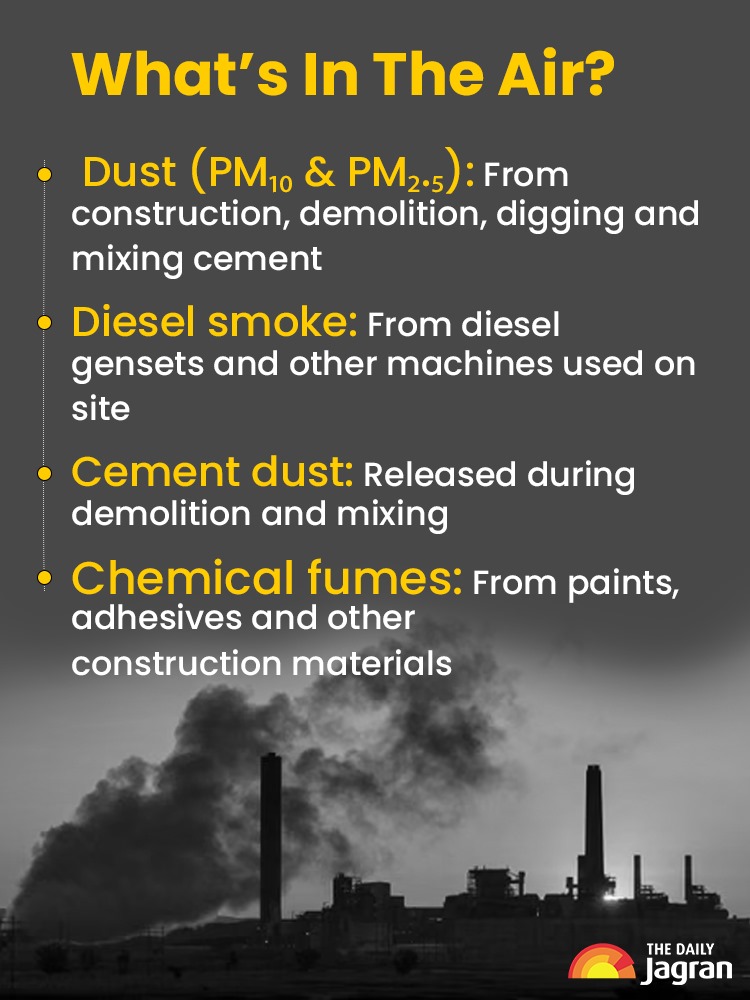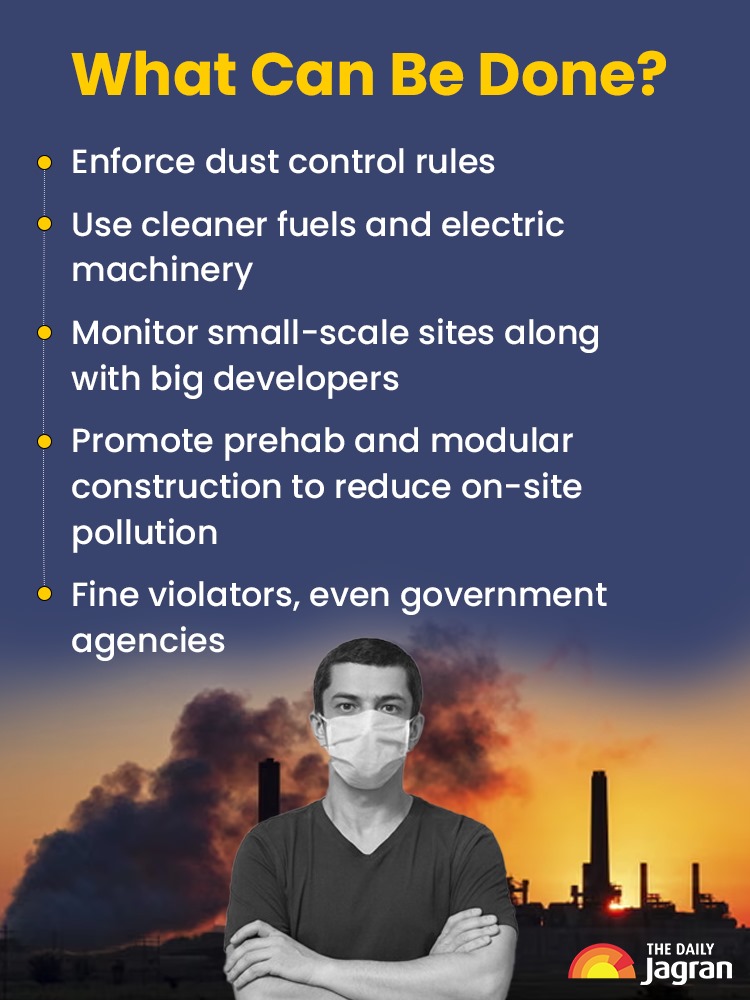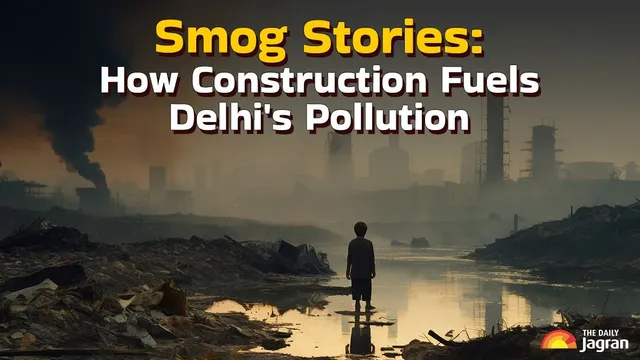- By Chetna Shree
- Mon, 20 Oct 2025 08:01 PM (IST)
- Source:JND
Smog Stories: Delhi is expanding rapidly, with new apartments, roads, metro lines and infrastructure always under construction. But this growth comes at a cost. Though overlooked, the dust, emissions and machinery associated with construction also quietly fuel Delhi’s worsening pollution crisis.
Delhi’s Air Quality Index (AQI) on October 19 crossed the 300 mark, entering the “very poor” category in many parts of the city. In response, the Commission for Air Quality Management (CAQM) imposed Stage II of the Graded Response Action Plan (GRAP). This stage includes early pollution control measures, also targeting construction activities, which account for approximately 7 per cent of Delhi’s pollution.
While vehicular emissions, industry, and agricultural stubble burning bear the blame every winter, construction often escapes the spotlight.

Source: Centre For Science And Environment Data (CSE) Data
How Construction Pollutes Delhi’s Air?
Dust from Construction and Demolition
- Building or tearing down structures releases a lot of dust, particularly particulate matter (PM10 and PM2.5), which can irritate the nose and throat and even lead to serious health problems.
- Trucks carrying loose materials like sand also cover the roads with dust, which gets lifted into the air by wind or passing vehicles.
ALSO READ: Smog Stories: What Are Green Firecrackers? Can They Really Make Delhi's Diwali Less Polluted?
- Construction activities and road dust account for 25-30 per cent of Delhi’s total PM10 load in the winter months, CSE stated, using IITM’s Decision Support System for Air Quality Management.
Emissions From Construction Machinery
- Heavy construction machines, such as bulldozers, cranes, concrete mixers, and backup generators, emit smokes and gases like nitrogen oxides, carbon monoxide, and extra particulate matter, adding to the pollution crisis.
- Most construction equipment in India does not meet Bharat Stage VI emission norms, and the use of diesel gensets is restricted or banned during poor air quality periods under GRAP rules.
Exposed Construction Waste
- Demolished building materials, such as broken bricks, concrete chunks, plaster, tiles, and metal scraps, often lie uncovered or are illegally dumped in open areas.
- Even when the government puts up a ban on construction, poorly managed waste continues to be a source of air pollution, as it dries out and turns into dust.
- During the winter months, from October to February, this can further spike AQI levels.
What’s In The Air?
Construction activities release various harmful things into the air we breathe:

Speaking to The Daily Jagran, Dr Bandana Jyoti, a Bengaluru-based physician, said, “The fine particulate matter (PM2.5 and PM10) released from construction sites can significantly impact respiratory health. These tiny particles penetrate deep into our lungs, aggravating conditions like asthma, bronchitis, and even leading to cardiovascular problems. Prolonged exposure can weaken the lung's natural defences, increasing susceptibility to infections and long-term respiratory diseases.”
These tiny particles do not just make the air hazy; they enter our lungs, causing asthma, heart disease and other health problems.

GRAP-2 Anti-Pollution Curbs Implemented: Is It Enough?
The Commission for Air Quality Management imposed Stage 2 of the Graded Response Action Plan (GRAP) after Delhi’s Air Quality Index was recorded at 302 on October 19, entering into the “very poor category.” It includes:
- Inter-state buses from NCR states will no longer be allowed to enter Delhi.
- The use of diesel generators in the national capital will be restricted.
- Parking fees will be increased to discourage private vehicle use.
- Construction activities in Delhi will be restricted and not permitted at the previous scale.
- Daily sweeping and water sprinkling will be carried out to control dust pollution.
However, GRAP is only a temporary fix. It can help reduce pollution for now, but it doesn’t solve the bigger, long-standing problem of Delhi’s pollution crisis.
What Can Be Done?
If Delhi wants clear air without stalling its development, the solution lies in sustainable construction.

Conclusion
Delhi is not alone; every other growing city continues to battle between development and clean air. The answer to the crisis isn’t to stop building, but to build better and sustainable. With smarter policies, stricter enforcement, and cleaner building practices, Delhi can continue to expand without suffocating its people.
(This article is part of the series 'Smog Stories'. To read more articles in the series, click here https://www.thedailyjagran.com/search/Smog-Stories)

